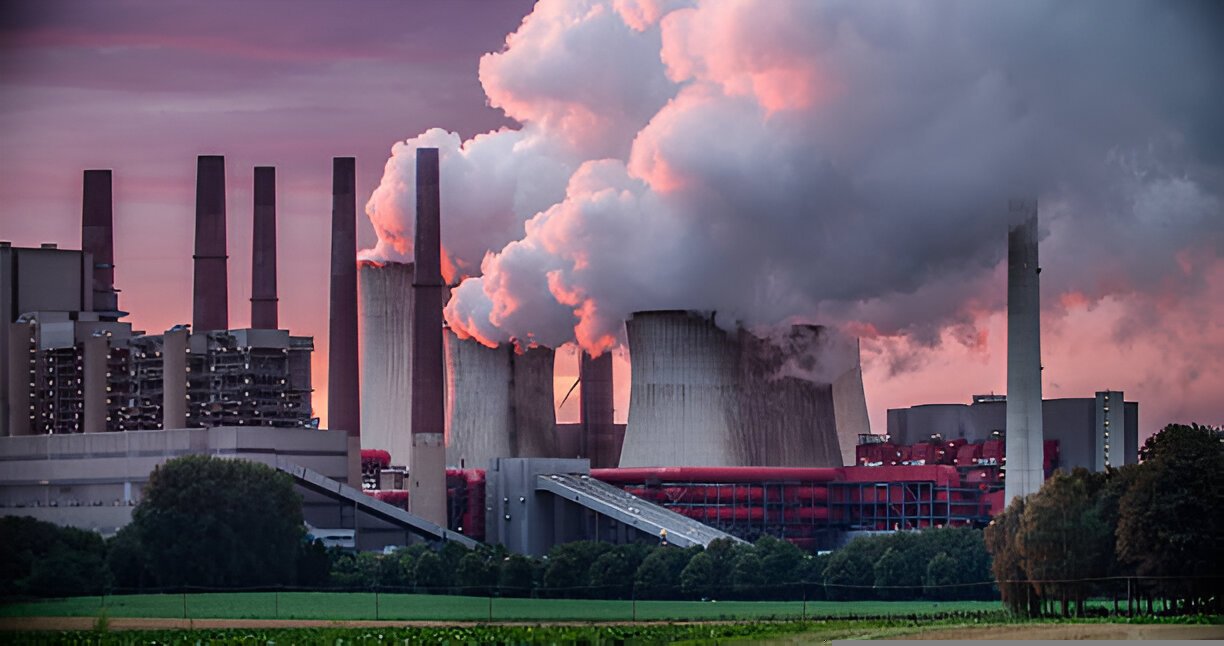The term “smoke-stack industries” might evoke an image of factories with tall chimneys emitting large plumes of smoke. However, this term is much more than a simple reference to industrial pollution; it symbolizes a particular set of industries that have played a crucial role in shaping the global economy. In this guide, I will take you through the concept of smoke-stack industries, explaining their significance, how they function, and why they remain relevant today, despite the rise of newer, more advanced industries.
Table of Contents
What Are Smoke-Stack Industries?
Smoke-stack industries refer to traditional, heavy industries that are often characterized by large-scale manufacturing, energy production, and natural resource extraction. These industries include sectors such as steel manufacturing, coal mining, petroleum refining, automotive production, and chemical manufacturing. Historically, they were seen as the backbone of industrial economies, particularly during the Industrial Revolution and the subsequent period of rapid urbanization.
The term “smoke-stack” is a metaphor for the visible environmental impact these industries often have, particularly in the form of air pollution, which arises from burning fossil fuels and other industrial processes. While the environmental toll is evident, the economic contributions of smoke-stack industries have been equally profound, providing jobs, infrastructure, and the raw materials necessary for the growth of modern economies.
The Role of Smoke-Stack Industries in the Economy
Economic Contribution
For many decades, smoke-stack industries were the economic engine of the United States and other industrialized nations. They created vast numbers of jobs, built cities, and powered the global economy with essential goods. Today, while their role has evolved, these industries still contribute significantly to economic output, especially in developing countries.
For instance, the manufacturing sector in the United States, though not as dominant as it once was, still accounts for a substantial portion of GDP. According to the U.S. Bureau of Economic Analysis, manufacturing accounted for about 11% of the nation’s GDP in 2021. Within that sector, industries such as chemicals, machinery, and primary metals remain essential components.
Employment and Jobs
Smoke-stack industries have historically been major employers. Although the automation of many tasks has reduced the number of labor-intensive jobs, these industries still provide millions of jobs globally. In many regions, jobs in sectors like mining, steel production, and oil refining offer wages that are higher than average in the service sector, making them essential sources of employment, especially in industrialized or developing areas.
Infrastructure Development
One of the most significant impacts of smoke-stack industries is the development of infrastructure. The need to transport raw materials, build factories, and develop urban centers led to the construction of roads, railroads, ports, and entire cities dedicated to industrial production. These industries were central to the development of modern infrastructure, which continues to support global commerce today.
Key Smoke-Stack Industries
1. Steel Industry
The steel industry has long been a critical pillar of the global economy. Steel is a fundamental material in construction, automotive manufacturing, and numerous other sectors. The process of steel production typically involves the extraction of iron ore, which is then smelted in blast furnaces powered by coal. This high energy consumption and significant environmental impact, particularly in terms of carbon emissions, have led to efforts to innovate cleaner and more efficient steel production technologies.
Example Calculation: Steel Production and Carbon Emissions
To understand the scale of carbon emissions, consider that producing one ton of steel traditionally generates about 1.8 tons of carbon dioxide. If a steel plant produces 500,000 tons of steel per year, the total emissions from that facility would be:
500,000 , \text{tons of steel} \times 1.8 , \text{tons of CO}_2/\text{ton of steel} = 900,000 , \text{tons of CO}_2This calculation shows the substantial carbon footprint associated with traditional steel production.
2. Automotive Industry
The automotive industry is another quintessential example of a smoke-stack industry. It relies on the production of automobiles, which are typically constructed from steel, plastics, and rubber, and powered by internal combustion engines. While electric vehicles (EVs) are becoming more popular, the transition is still ongoing. The automotive sector also heavily depends on oil and gas for both manufacturing and fuel.
3. Coal Mining and Energy Production
Coal mining is one of the oldest smoke-stack industries, and while its global significance has declined in recent years due to environmental concerns, it remains a vital energy source in many developing countries. Coal is burned in power plants to generate electricity, and its extraction from the earth is an essential component of industrial economies. However, coal mining is notorious for its environmental impact, including the destruction of ecosystems and the emission of harmful pollutants.
4. Chemical Manufacturing
The chemical manufacturing industry is another cornerstone of smoke-stack industries. From pharmaceuticals to fertilizers and industrial chemicals, the production processes are energy-intensive and often produce significant waste. As with other smoke-stack industries, there has been increased pressure to reduce emissions and move toward more sustainable practices.
5. Oil Refining
Oil refining processes involve transforming crude oil into usable products such as gasoline, diesel, and jet fuel. These refining processes are energy-intensive, and the extraction of oil can have significant environmental consequences, including habitat destruction and oil spills.
Environmental and Societal Impacts of Smoke-Stack Industries
While smoke-stack industries have been integral to economic growth, their environmental and societal impacts cannot be ignored. The primary concerns with these industries are pollution, resource depletion, and climate change.
Pollution
The burning of fossil fuels in smoke-stack industries is a leading cause of air pollution. Industries such as coal mining, oil refining, and steel production release large amounts of sulfur dioxide, nitrogen oxides, and particulate matter into the air, contributing to smog and respiratory diseases. The infamous “smoke-stack” image is a reminder of the environmental cost of industrialization.
Climate Change
The burning of fossil fuels and industrial processes in smoke-stack industries is also a leading contributor to climate change. These industries are responsible for a significant portion of global greenhouse gas emissions, particularly carbon dioxide, which is a major driver of global warming.
Resource Depletion
Many smoke-stack industries, such as mining and oil extraction, rely on non-renewable natural resources. The depletion of these resources poses long-term sustainability concerns. As these industries continue to exploit finite resources, the question arises: what happens when these resources run out, and how do we transition to alternative energy and production methods?
Transitioning to Cleaner Technologies
Moving Toward Sustainability
In recent years, there has been an increasing push for smoke-stack industries to adopt cleaner and more sustainable practices. This transition is happening on multiple fronts, from the development of renewable energy sources to the introduction of cleaner manufacturing technologies.
For example, the steel industry is exploring alternative methods of production, such as using hydrogen as a reducing agent instead of coal, which would significantly reduce carbon emissions. Similarly, the automotive industry is shifting toward electric vehicles, which produce zero emissions during operation.
Regulatory Pressures
Governments around the world are also tightening regulations on smoke-stack industries. Carbon taxes, emission trading systems, and stricter environmental standards are pushing industries to reduce their environmental footprint. In the U.S., the Environmental Protection Agency (EPA) plays a significant role in regulating pollution from industrial sources.
The Rise of Green Industries
The increasing focus on sustainability has led to the rise of green industries that focus on renewable energy, waste reduction, and sustainable materials. Wind and solar energy industries, electric vehicle manufacturers, and companies focused on circular economy models are all part of the solution to the challenges posed by smoke-stack industries.
The Future of Smoke-Stack Industries
While the future of smoke-stack industries may seem uncertain, they are unlikely to disappear entirely in the near future. Instead, they will likely continue to evolve, incorporating cleaner technologies and adapting to new economic realities.
A Shift Toward Green Industry Practices
As mentioned earlier, many traditional smoke-stack industries are adopting greener practices. Steel production is shifting towards using electric arc furnaces (EAFs) instead of blast furnaces, reducing the reliance on coal. Similarly, the oil industry is exploring ways to capture and store carbon emissions, reducing their environmental impact.
Industry Consolidation and Automation
Another trend in the smoke-stack industries is the consolidation of companies and the automation of manufacturing processes. Many industrial sectors are embracing technology to increase efficiency and reduce labor costs. Robotics and artificial intelligence are playing an increasing role in manufacturing, and this shift is expected to continue as industries modernize.
Conclusion
Smoke-stack industries have been central to the growth of economies around the world, particularly in the U.S. While their environmental impact is significant, their economic contributions cannot be understated. The ongoing evolution of these industries, driven by technological innovation and environmental pressure, suggests that they will remain an important part of the global economy. However, to meet the demands of a more sustainable future, smoke-stack industries will need to adapt, embracing greener practices and technologies. By doing so, they can continue to provide essential goods and services while mitigating their impact on the planet.





